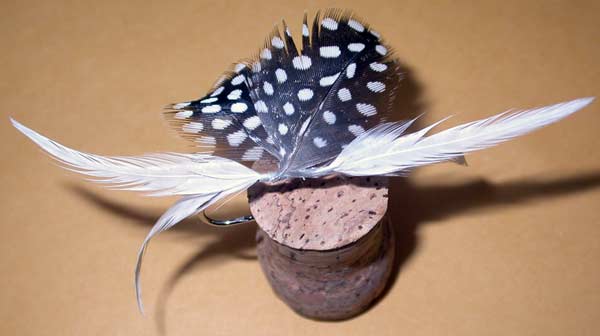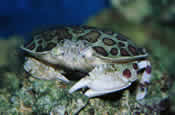| Calico Crab | |||||||||||
 |
 (Hepatus epheliticus) |
||||||||||
|
Time
of Appearance: May through August around new moons.
At certain times during the Spring and
Summer, at night, juvenile crabs will drift in the surface. The majority of crab patterns are weighted and where I fish that wouldn't be practical because of the mussel beds and thick
vegetation. Plus, weighted crab flies don't drift in the surface. I
have seen some deer hair crab patterns but they neither address profile
nor juvenile size. I've also seen some beautiful hackle crab flies but
they seem to work best in larger sizes. This fly is ¾" long and
I've seen some juvenile crabs around an inch and down to a ½"
floating by on the surface. When I've seen these creatures drift by their crushing
claws are tucked in but their other claws are out. The thinner it is
trimmed the lower it will sit in the surface. the splayed hackle and
some movement to the fly and the yellow band also acts as an attractor.
How to fish this fly. On certain outgoing new moon tides in the Spring
and Summer the juvenile crabs move out of the back of the estuary. Look carefully
and they're everywhere. Get the fly into moving current and dead drift
it. If you notice that the crabs are an inch or so below the surface
add one or two split shot(s) (18" above the fly) to slightly pull the fly down.
|